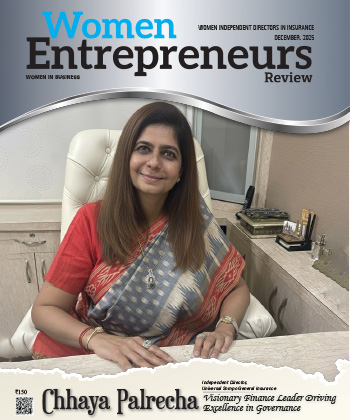
Activists Raise Alarm Over Poor Coverage of Maternity Benefits Under NFSA
By: WE staff | Tuesday, 6 May 2025
- The government's maternity benefit scheme covers only about 20 percent of births per year
- The National Food Security Act (NFSA), 2013, provides Rs 6,000 as a legal right to every pregnant woman
Right to Food activists have sounded alarm over the weak implementation of India's maternity benefit scheme, mandated by law under the National Food Security Act (NFSA), 2013. Despite the law ensuring every pregnant woman a maternity benefit of ₹6,000, recent figures indicate just 20 percent of yearly births are being covered by the government scheme.
Statistics shown in the Rajya Sabha in March showed that in 2024–25, just 54 lakh women were given the benefit — down from 73 lakh in 2022–23, but up from just 22.5 lakh in 2023–24. With about 270 lakh births happening in India annually, the present coverage is still alarmingly low.
Activists estimate that paying ₹6,000 to 90 percent of all births would cost more than ₹14,500 crore a year. But the scheme — the Pradhan Mantri Matru Vandana Yojana (PMMVY) — has been given less than ₹2,000 crore for several years. Additionally, the ₹6,000 benefit level established in 2013 has not been increased for inflation. Activists say that even a small revision would bring the benefit up to at least ₹12,000.
In 2017, the Ministry of Women and Child Development promised the Supreme Court that every pregnant woman would be paid ₹6,000 under Section 4 of the NFSA. Instead, the PMMVY was started, capping the benefit to ₹5,000, applying it only to a woman's first child (or second, if it is a girl) and imposing various conditions.
To receive ₹3,000 (the initial instalment), a woman will need to register pregnancy and undergo at least one antenatal examination at an accredited health facility within six months. For the second ₹2,000 instalment, childbirth should be registered, and the infant should have completed the first dose of immunisation. It is open only to poor women, and they are required to produce many documents — a ration or BPL card, Aadhaar, bank account linked to Aadhaar, mobile number, and complete maternal and child health data.
These restrictive criteria have excluded a vast majority of women. In 2023–24, only 2.7 lakh women — just about 1 percent of total births — received the second instalment. In contrast, Tamil Nadu and Odisha have implemented more generous maternity schemes, offering ₹18,000 and ₹10,000 respectively per pregnancy, and achieving 84 percent and 64 percent coverage.
Most Viewed
- 1 Women's Health Startup HerMD Closing Doors Amid Industry Challenges
- 2 5 Famous Women in Indian Armed Forces
- 3 Saudi Women No longer Require Male Permission for Clothing Choices, says Prince MbS
- 4 Kolkata Medtech Startup Innovodigm Raises Rs 5.5 Crore Seed Funding Led by IAN Group
- 5 Yamunanagar's Kashish Kalra Honoured after Securing 111th Rank in UPSC Civil Services Exam
- 6 Madurai Appoints Its First Woman Corporation Head
- 7 IAS Vijayalakshmi Bidari Appointed as the new Nagpur Divisional Commissioner
- 8 American Entrepreneur Lucy Guo Overtakes T Swift to become Youngest Female Billionaire
- 9 ICC Women's World Cup 2025 Trophy Showcased at Indore's Holkar Stadium
- 10 Aparna Saxena's Beauty Venture AntiNorm Launches in India
- 11 Vidya Nataraj Co-Founded BlueStone Jewellery & Lifestyle files IPO
- 12 5 Women Freedom Fighters of India
- 13 Dr. G Krishnapriya appointed as CEO for Trichy
- 14 M3M & Sirona Partner to Introduce Menstrual Hygiene Vending Machines in 15 Locations
- 15 Punjab Govt launches SHE Cohort 3.0 Supporting Tech-led Women Startups
- 16 Indian origin Lawyer, Sweena Pannu appointed as the US New Superior Court Judge
- 17 The Aurora Tech Award recognizes 4 Indian Women-led Startups
- 18 Kerala's Republic Day parade featured an all-female tableau
- 19 Manisha Kabbur Becomes Karnataka's First Woman International Karate Coach
- 20 Director K. S. Ravikumar's Daughter Maalica Ravikumar Launches Life Coaching Company 'Evergrowth Academy' for Women
- 21 Leezu's Raises Pre-Seed Funding to Accelerate Growth in Sexual Wellness Industry
- 22 Sattu: Super-easy summer drink for PCOS gut healing
- 23 Swathi Nelabhatla creates Sitha App, India's First Women-Exclusive Gig Platform
- 24 7 Timeless Female Kathak Dancers & their Iconic Legacies
- 25 Meet 7 Iconic Women Architects of Modern India & their Most Impactful Work
- 26 This Woman-led Insuretech Startup is Helping Bridge the Education Financing Gap in India
- 27 Women Leaders Share Lessons Learnt from India Women's WC Win
- 28 5 Enterprising Women Founders Powering Singapore's Tech & Innovation Landscape
- 29 4 Women. 4 Stories. One Vision for Smarter, Stronger Healthcare
- 30 Global Gender Gap Narrows to 68.8%, But Full Equality 123 Years Away: WEF Report 2025
- 31 Changemakers: 7 Women Entrepreneurs Taking the Make in India Movement Forward
- 32 Meet Lucy Guo, The Youngest Self-Made Female Billionaire Disrupting Tech
- 33 How Women are Driving India's Festive Online Shopping Surge






